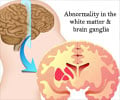The important factor of epileptic seizures in rats has been identified by scientists. A person subject to epilepsy suffers from occasional convulsive seizures.

TOP INSIGHT
Knowing that embedding calcium-permeable AMPA receptors leads to the consolidation of seizure activity, we can develop new antiepileptic drugs.
"Neurons send each other signals that can be excitatory or inhibitory, depending on the type of target receptor on the cell membrane. For example, the first are those that react to glutamate and its analogues, the second are sensitive to gamma-aminobutyric acid or GABA. Yet GABA receptors of those suffering with the epilepsy also become exciting. There lies the main research difficulty: when several signals act on the neuron at once it is very difficult to assess their individual contribution," says Anton Chizhov, doctor of physical and mathematical sciences, senior researcher at the Ioffe Institute of RAS and Leading Researcher at Sechenov Institute of Evolutionary Physiology and Biochemistry.
During their experiments, scientists examined the effect of amino acids (constituent proteins) on receptors of all major types (AMPA, NMDA and GABA). It turned out that each of these components of the signal after epileptic electrical discharges becomes stronger and longer. But what if this happened as a result of affecting only one amplified signal on the remaining paths? To find this out scientists created a mathematical model of interacting nerve cells system. According to the model, only the conductivity of the AMPA receptors in the network of neurons significantly changes, leading to stronger excitation of all neurons and stronger synaptic signals recorded on one nerve cell.
"Further studies showed that this is the mechanism of synaptic plasticity with the incorporation of new calcium-permeable AMPA receptors into the cell membranes. Under normal conditions, such a process in the brain is associated with memory and learning, but under pathological conditions it leads to an excitability increase up to tens of minutes. Therefore, the risk of a new convulsive discharge rises, which may lead to pathology fixation.
Source-Eurekalert
 MEDINDIA
MEDINDIA




 Email
Email








